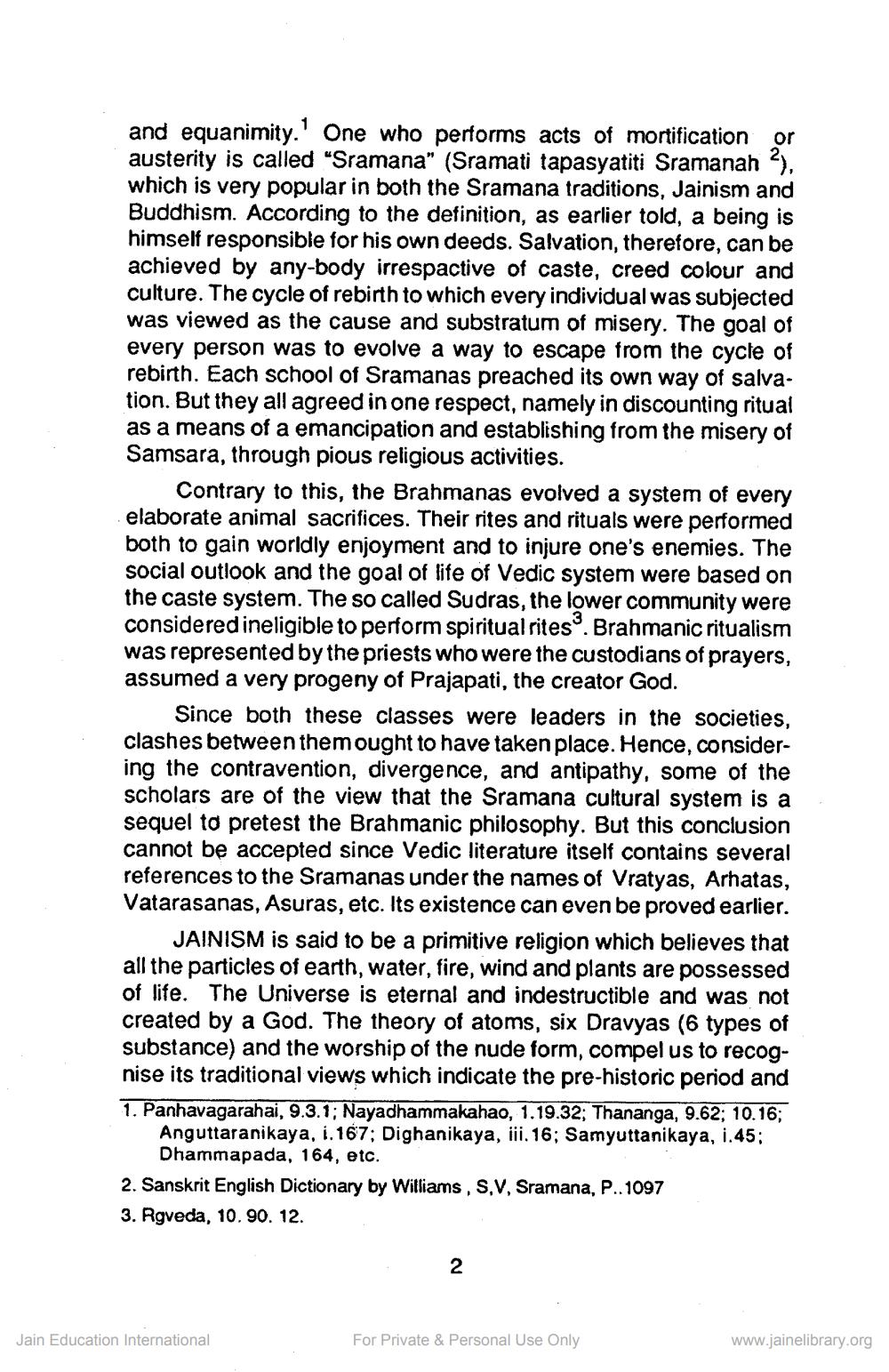Book Title: Jainism and Mahavira Author(s): Bhagchandra Jain Bhaskar Publisher: Digambar Jain Sahitya Sanskriti Sanskaran Samiti View full book textPage 8
________________ and equanimity.' One who performs acts of mortification or austerity is called "Sramana” (Sramati tapasyatiti Sramanah ?), which is very popular in both the Sramana traditions, Jainism and Buddhism. According to the definition, as earlier told, a being is himself responsible for his own deeds. Salvation, therefore, can be achieved by any-body irrespactive of caste, creed colour and culture. The cycle of rebirth to which every individual was subjected was viewed as the cause and substratum of misery. The goal of every person was to evolve a way to escape from the cycle of rebirth. Each school of Sramanas preached its own way of salvation. But they all agreed in one respect, namely in discounting ritual as a means of a emancipation and establishing from the misery of Samsara, through pious religious activities. Contrary to this, the Brahmanas evolved a system of every elaborate animal sacrifices. Their rites and rituals were performed both to gain worldly enjoyment and to injure one's enemies. 1 social outlook and the goal of life of Vedic system were based on the caste system. The so called Sudras, the lower community were considered ineligible to perform spiritual rites. Brahmanic ritualism was represented by the priests who were the custodians of prayers, assumed a very progeny of Prajapati, the creator God. Since both these classes were leaders in the societies, clashes between them ought to have taken place. Hence, considering the contravention, divergence, and antipathy, some of the scholars are of the view that the Sramana cultural system is a sequel to pretest the Brahmanic philosophy. But this conclusion cannot be accepted since Vedic literature itself contains several references to the Sramanas under the names of Vratyas, Arhatas, Vatarasanas, Asuras, etc. Its existence can even be proved earlier. JAINISM is said to be a primitive religion which believes that all the particles of earth, water, fire, wind and plants are possessed of life. The Universe is eternal and indestructible and was not created by a God. The theory of atoms, six Dravyas (6 types of substance) and the worship of the nude form, compel us to recognise its traditional views which indicate the pre-historic period and 1. Panhavagarahai, 9.3.1; Nayadhammakahao, 1.19.32; Thananga, 9.62; 10.16; Anguttaranikaya, 1.167; Dighanikaya, iii. 16; Samyuttanikaya, 1.45: Dhammapada, 164, etc. 2. Sanskrit English Dictionary by Williams, S.V, Sramana, P... 1097 3. Rgveda, 10. 90. 12. 2 Jain Education International For Private & Personal Use Only www.jainelibrary.orgPage Navigation
1 ... 6 7 8 9 10 11 12 13 14 15 16 17 18 19 20 21 22 23 24 25 26 27 28 29 30 31 32 33 34 35 36 37 38 39 40 41 42 43 44 45 46 47 48 49 50 51 52 53 54 55 56 57 58 59 60 61 62 63 64 65 66 67 68
